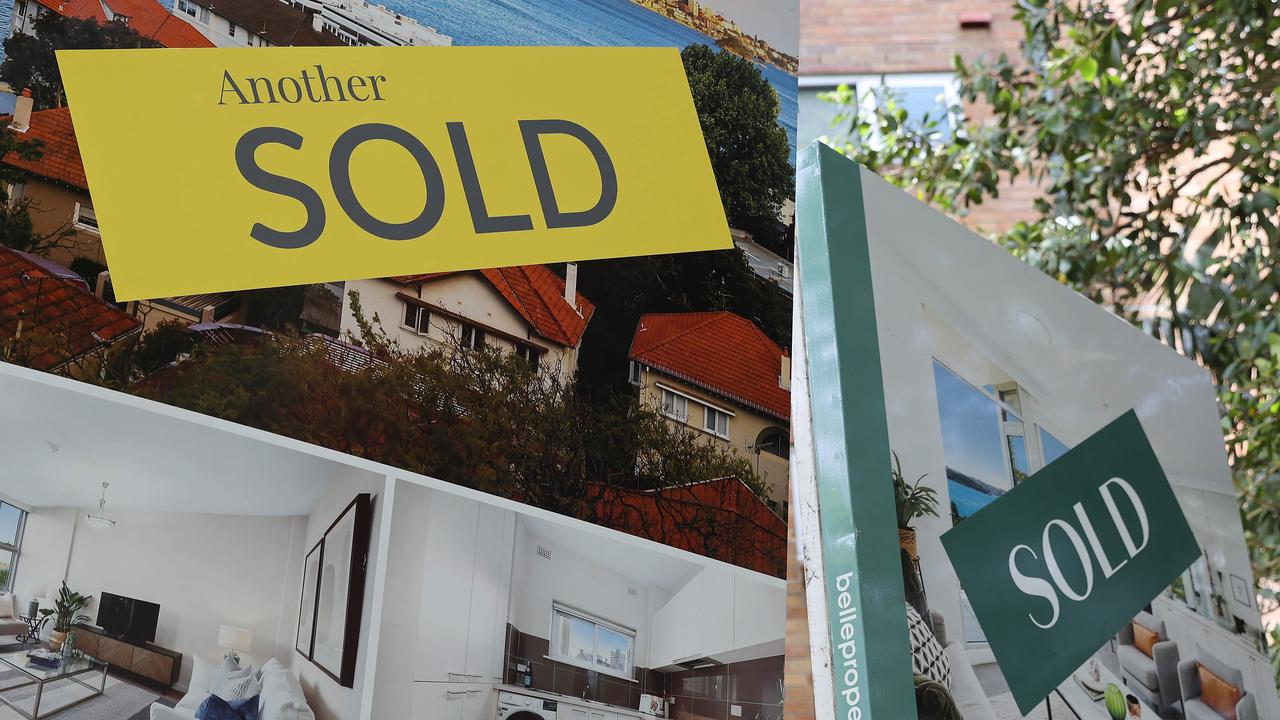Aussie cities where houses cost $1m plus
Residential property prices have had their biggest annual growth in decades, with the median value in three cities now surging past $1m.
Australian residential property prices continue to surge, recording the highest annual rate of growth since June 1989, with three capital cities now tipping the $1m mark for median house values.
CoreLogic data released on Tuesday showed dwelling values had rocketed 22.4 per cent over the past 12 months.
The trend of slowing growth from a monthly peak of 2.8 per cent in March 2021 continues, however, with prices up 1.1 per cent last month compared with 1 per cent for December.
CommSec senior economist Ryan Felsman said the broader slowdown in housing activity over the past few months was largely expected, with property markets generally “closed” as real estate agents and homebuyers focused on their summer holidays in January.
“And the spike in Omicron virus variant cases, particularly in Sydney and Melbourne, likely weighed on property sales and prices at the turn of the year,” Mr Felsman said.
CoreLogic research director Tim Lawless said a firmer reading on how 2022 was shaping up should emerge as the volume of home sales moved out of seasonal lows.
“The early indication is that housing markets are starting 2022 with a similar trend to what we saw through late last year. Values are still broadly rising but nowhere near as fast as they were in early 2021,” Mr Lawless said.
“A softening in growth conditions has been influenced by less government stimulus, worsening affordability, rising fixed-term mortgage rates and, more recently, a slight tightening in credit conditions and a surge in new listings through the final quarter of last year.”
The typical Australian home was now worth $131,236 more than it was a year ago, CoreLogic said.
Brisbane came out in front over the year, with housing values soaring 29.2 per cent, meaning the average property in the Queensland capital now costs $159,763 more than it did a year prior.
Melbourne’s median house value surpassed $1m for the first time last month, while for the second month in a row Canberra’s median house value eclipsed that eye-watering level.
In Sydney, the nation’s most expensive property market, the median house value climbed to just under $1.39m.
Commonwealth Bank economists expect Australia’s annual dwelling price growth will slow to around 7 per cent in 2022, although gains of 9 per cent are expected in Brisbane.
Perth house prices are expected to lag the broader market, up just 3 per cent.
The West Australian capital remains the second most affordable real estate market, with a median dwelling (houses and apartments) value of $531,243, while Darwin remains the cheapest at $496,476.
“In the near-term, homebuyers, investors and sellers should be on the lookout for signs of property market weakness, including weaker auction clearance rates, lifting advertised stock levels, a lengthening in days a home is advertised on the market and increased levels of home price discounting,” Mr Felsman said.
“Of course, the full reopening of Australia’s international border could yet influence demand for Aussie homes, while a potential reversal of capital city to regional Australia migration – as workers look to return to city offices in either a part-time or full-time capacity – is another interesting dynamic.”
Also on Tuesday, Australian Bureau of Statistics data showed new loan commitments for housing rose 4.4 per cent in December to a record high value of $32.8bn, seasonally adjusted.
“Investor lending has seen growth over the past 14 months and accounted for around one-third of the value of new housing loan commitments,” ABS acting head of finance and wealth Amanda Seneviratne said.
First-home buyers piled on mortgages in Western Australia, jumping 11.8 per cent.
Canstar group executive of financial services Steve Mickenbecker said the record lending figure confirmed the property market was “red hot and likely to stay that way well into 2022, incredibly driving prices further up”.
“People have taken advantage of lower spending opportunities to build savings, with household deposits up 11 per cent for 2021,” Mr Mickenbecker said.
“Cashed-up Australians will be looking for a place to invest their savings and property remains a perennial favourite.
“From today, there are no fixed rates below 2 per cent for investors, making borrowing a little less attractive but not enough to keep them out of the market.
“Even first-home buyers have returned to the market after a long slide, no doubt viewing house prices and interest rates as low now as they are going to get.”
Canstar reports there were more than 6000 fixed interest rate hikes over the past six months.
While the Reserve Bank of Australia kept the historic low cash rate on hold on Tuesday, Westpac is expecting an increase as early as August.
“The bargains now are in variable rates where Canstar lists 59 loans below 2 per cent,” Mr Mickenbecker said.
ANZ Research said low rates of unemployment as well as stronger savings had supported the record borrowing, warning that if it continued at this pace, the Australian Prudential Regulatory Authority may consider more measures to slow it.
Originally published as Melbourne, Canberra houses tip $1m mark, Sydney’s nudge $1.4m
For all the latest business News Click Here

